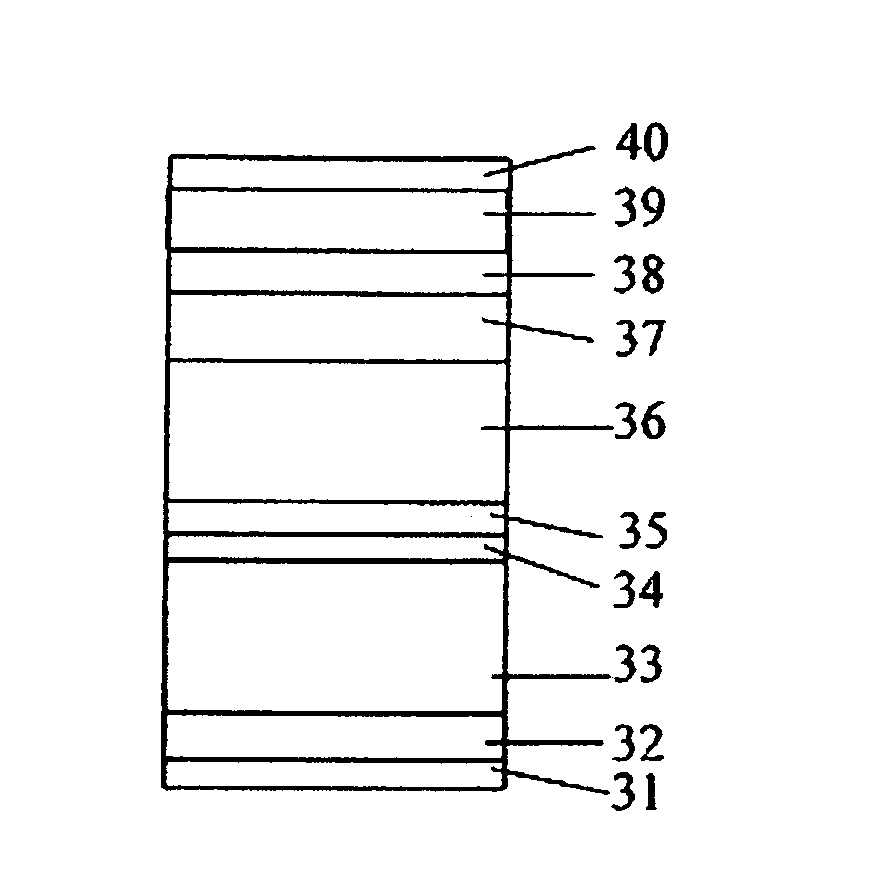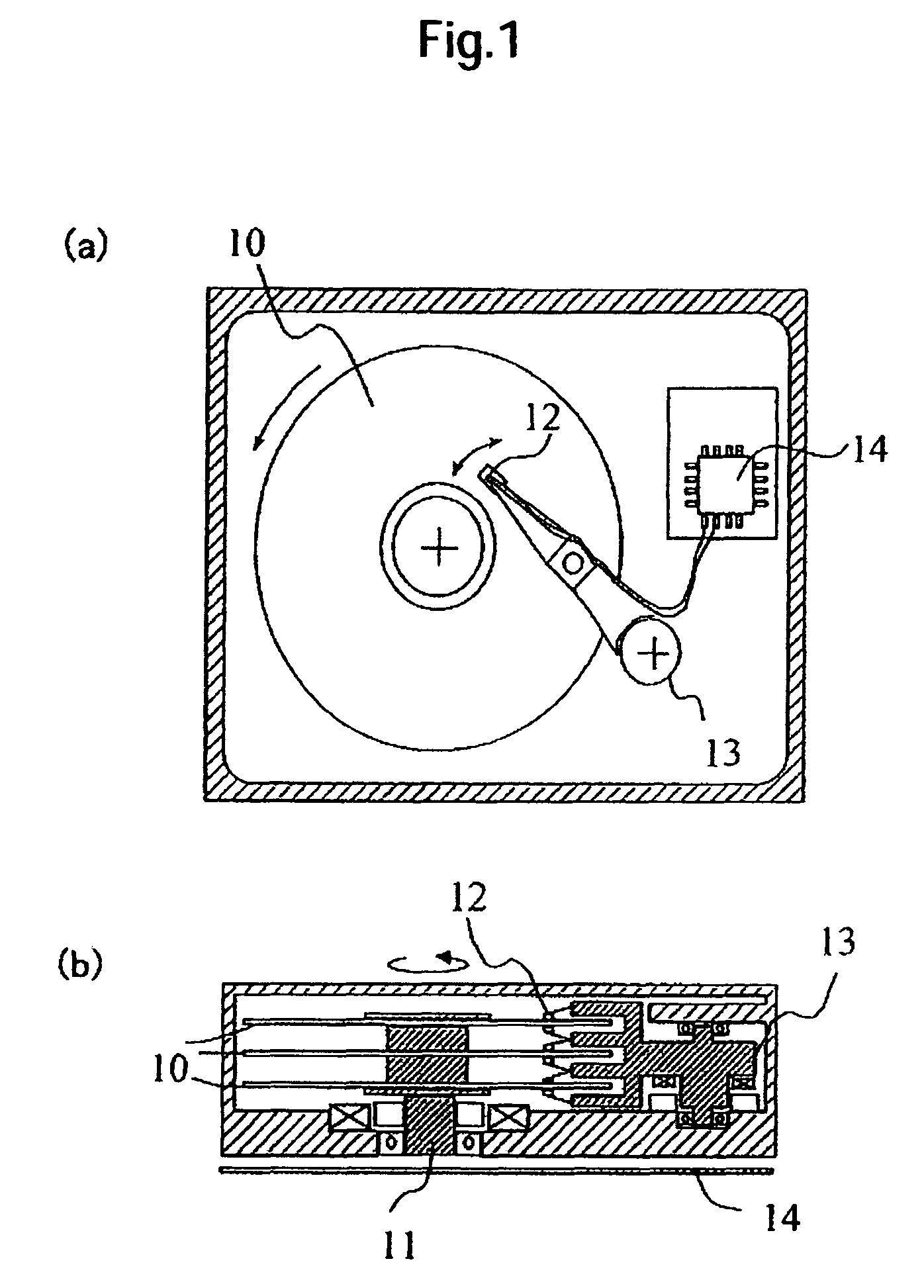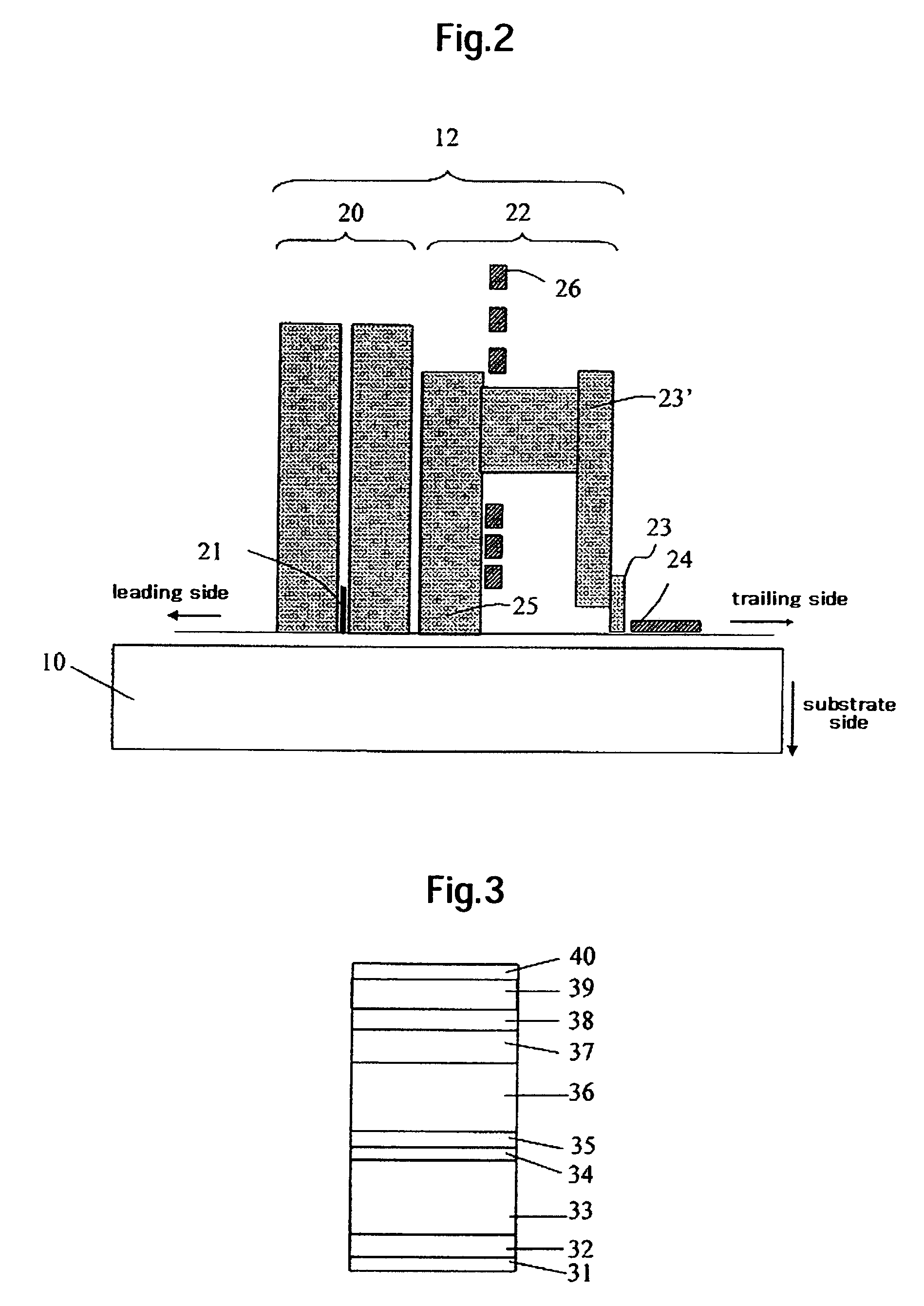Magnetic storage apparatus
a magnetic storage and apparatus technology, applied in the field of magnetic storage apparatuses, can solve the problems of reducing the magnetic anisotropy energy, deteriorating the stability of recording signals, and difficult to further increase the recording density by using the system, so as to improve the write-field gradient, improve the response of the magnetic field to the writing current, and reduce the effect of the magnetic field leaked from the auxiliary pol
- Summary
- Abstract
- Description
- Claims
- Application Information
AI Technical Summary
Benefits of technology
Problems solved by technology
Method used
Image
Examples
experimental example 1
[0029]FIG. 1 shows a schematic view of a magnetic storage apparatus as an example of one embodiment of the present invention. FIG. 1(a) is a schematic plan view and FIG. 1(b) is a schematic cross sectional view thereof. The magnetic storage apparatus includes a magnetic recording medium 10, a driving section 11 for driving the magnetic recording medium, a magnetic head 12 comprising a recording unit and a read portion, means 13 for relatively moving the magnetic head to the magnetic recording medium, and means 14 for inputting and outputting signals to the magnetic head. A relation between the magnetic head 12 and the magnetic recording medium 10 is shown in FIG. 2. The read section 20 has a read element put between a pair of magnetic shields, and a giant magnetoresistive (GMR) element, or tunneling magnetoresistive (TMR) element, etc. is used for the read element 21. The recording unit 22 is of a structure having a main pole, an auxiliary pole 25, and a coil 26, in which the main p...
experimental example 2
[0052]A perpendicular magnetic recording medium of Experimental Example 2 was manufactured by the same film structure and the same film forming conditions as those for Sample 1-8 in Experimental Example 1 except for the second recording layer and the third recording layer. In Experimental Example 2, the composition and the film thickness of the second recording layer and the third recording layer were changed. The read / write performance was evaluated by using the same trailing side shield head as in the case of Table 1 for Experimental Example 1. Table 3 shows the composition and the film thickness of the second recording layer and the third recording layer, and the result of the read / write performance. Table 3 also shows the value of t2 / (t2+t3) in a case wherein the thickness of the second recording layer is represented by t2 (nm) and the thickness of the third recording layer is represented by t3 (nm).
[0053]
TABLE 3SecondThirdRead / writerecording layerrecording layerperformanceFilmF...
experimental example 3
[0058]Samples of Experimental Example 3 were manufactured by the same film structure and the same film forming conditions as those for Sample 1-8 in Experimental Example 1 except for the second recording layer and the third recording layer. The thickness of the second recording layer was 2 nm, the thickness of the third recording layer was 6 nm (t2 / (t2+t3)=0.25), the Pt concentration for each of the second recording layer, and the third recording layer was set to 11 at. % and the Cr concentration and the Co concentration were changed. For the samples, the medium SNR was evaluated by using the same trailing side shield head as in the case of Table 1 of Experimental Example 1. The difference between the Cr concentration (a) in the second recording layer and the Cr concentration (b) in the third recording layer (b−a) was determined and the obtained medium SNR is shown in Table 4. In Table 4, samples showing the medium SNR higher by 2 dB than that of Sample 1-4 in Table 1 (22.4 dB or mo...
PUM
| Property | Measurement | Unit |
|---|---|---|
| width | aaaaa | aaaaa |
| length | aaaaa | aaaaa |
| acceleration voltage | aaaaa | aaaaa |
Abstract
Description
Claims
Application Information
 Login to View More
Login to View More - R&D
- Intellectual Property
- Life Sciences
- Materials
- Tech Scout
- Unparalleled Data Quality
- Higher Quality Content
- 60% Fewer Hallucinations
Browse by: Latest US Patents, China's latest patents, Technical Efficacy Thesaurus, Application Domain, Technology Topic, Popular Technical Reports.
© 2025 PatSnap. All rights reserved.Legal|Privacy policy|Modern Slavery Act Transparency Statement|Sitemap|About US| Contact US: help@patsnap.com



